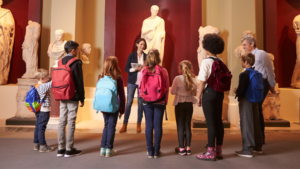
In speeches, I often draw comparisons between our country’s turn-of-the-century investments in public education and dam construction. Both systems were created to respond to industrialization and urban expansion. Both face challenges.
The high costs of major repairs to the nation’s aging dams, combined with increased awareness of their environmental downsides, has public officials seeking and finding alternatives. In the United States and around the world, integrating science, technology and community engagement into dam development projects has made it possible to minimize harmful impacts such as reduced biodiversity, while maximizing such benefits as ecosystem restoration and adaptive management strategies.
Each dam project is unique. Communities must consider local context, ecological sensitivity and societal needs to select solutions that will achieve a desired balance between the dam’s economic and technological benefits and its potential environmental consequences.
Equally broad solutions have been proposed for improving public education, with virtually every school district adopting at least some of those remedies. But neither the intent nor the impacts of those solutions seem as clear or as permanent for schools as they are for dams.
We welcome your contributions to the topic. Please reach out to talkwithus@kpcatalysts.com if you’d like to join to the discussion.



No comment yet, add your voice below!